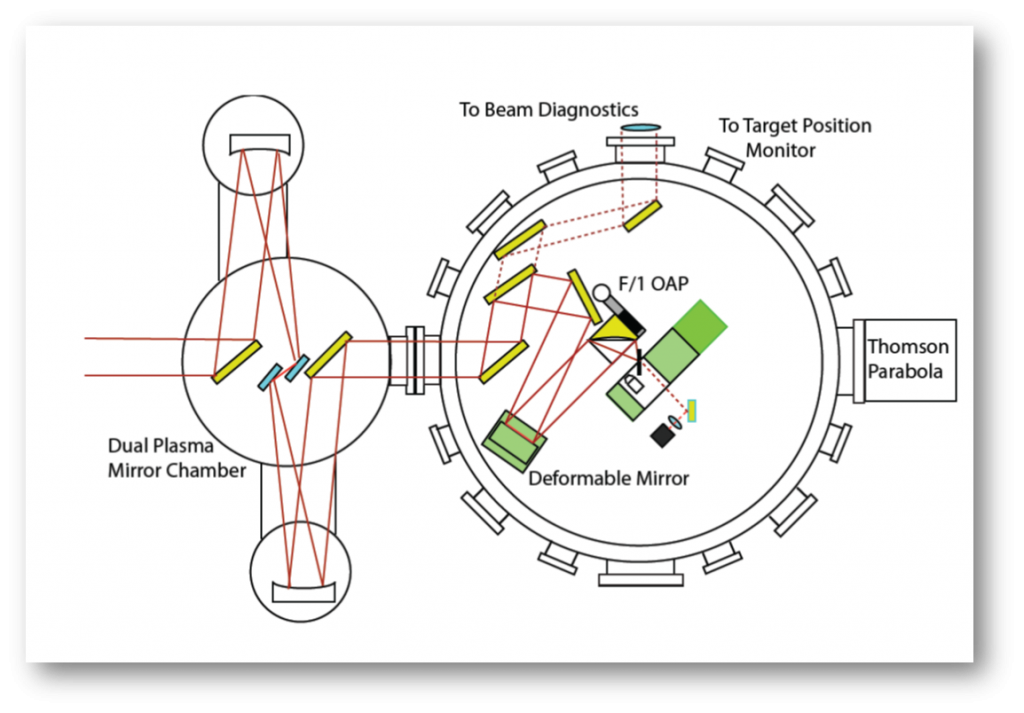Two experimental areas of the HERCULES house two separate experimental vacuum chambers for gas and solid targets interaction experiments. Both chambers are connected to the Hercules PW compressor chambers with vacuum beam lines (Fig. 1) and are equipped with vacuum pumps, target positioning stages, plasma diagnostics and data acquisition equipment.

Fig. 1. Petawatt compressor and vacuum beam lines.
Both experimental areas have radiation shielding. 60 cm thick cement walls surround the solid target chamber (Fig. 2) while the gas target chamber has 60 cm thick cement walls and local shielding made of lead bricks. There are a few primary experiments in solid target chamber (Fig. 3, 4a): ion acceleration, electron transport and high harmonics generation. All these experiments require intensities in excess of 1021 W/cm2 and high temporal contrast of the laser. High intensities are achieved by using a short focal length parabolic mirror (f/1 or shorter) to focus laser light into a diffraction limited spot size. For this purpose we use a 4 inch diameter dielectric coated deformable mirror (DM) (Xinetics Inc.) (Fig. 4b) with a feedback from the wavefront sensor. To achieve high temporal intensity contrast of 10-11 a special pulse cleaning technique is implemented at the front end of Hercules. Further improvement of the laser contrast by 5 orders of magnitude will be achieved by using 2 plasma mirrors in a separate vacuum chamber. After these mirrors the laser pulse will be sent to the interaction chamber where it will be corrected for any arising wavefront errors using the DM.

Fig.2 Solid target experimental area
Fig. 3. Schematics of the experimental configuration in solid target chamber.

Fig. 4. (a) Solid target chamber. (b) a 4″ Deformable mirror.
Fig. 5 shows the gas target chamber experimental area where we investigate laser wakefield electron acceleration using gas jets and capillary discharge plasmas and radiation generation. This experimental chamber (Fig. 6) is equipped with a magnetic spectrometer to study spectral characteristics of the accelerated electrons, a probe line to monitor plasma dynamics and magnetic field generation due to electron current, x-ray CCDs to study betatron radiation from a laser wakefield and various optical diagnostics. The bright multi-keV x-rays produced through betatron oscillations of the electron beam in a laser wakefield accelerator have a unique combination of properties such as an ultra-short duration, small source size and broad spectral coverage. These properties make this betatron x-ray source ideal for femtosecond temporally resolved phase contrast imaging of rapid phenomena in plasmas as well as in ultrafast x-ray diffraction and absorption spectroscopy.

Fig. 5. Gas target chamber experimental area.

Fig. 6. Gas target chamber setup.

